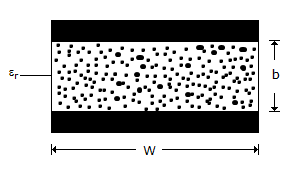Discussion
Home ‣ Electronics and Communication Engineering ‣ Materials and Components See What Others Are Saying!
- Question
Magnetic hysteresis phenomenon is explained by
Options- A. motion of domain walls
- B. motion of domain walls and domain rotation
- C. domain rotation
- D. none of the above
- Correct Answer
- motion of domain walls and domain rotation
- 1. In a single phase full wave ac regulator using two thyristors only, the gate circuits of the two thyristors
Options- A. must be isolated
- B. may or may not be isolated
- C. should be preferably, isolated
- D. should not be isolated Discuss
- 2. In a ripple counter,
Options- A. whenever a flip flop sets to 1, the next higher FF toggles
- B. whenever a flip flop sets to 0, the next higher FF remains unchanged
- C. whenever a flip flop sets to 1, the next higher FF faces race condition
- D. whenever a flip flop sets to 0, the next higher FF faces race condition Discuss
- 3. Maximum efficiency of class B power amplifier is 50%.
Options- A. True
- B. False Discuss
- 4. Which of the following commutation methods is the overall circuit under damped?
Options- A. Class A
- B. Class B
- C. Class C
- D. Both class A and Class B Discuss
- 5. The primary constants of a transmission line are
Options- A. R and L
- B. R, L and C
- C. R and C
- D. R, L, G and C Discuss
- 6. For the strip line in the given figure the capacitance per unit length =

Options- A.

- B.

- C.

- D.
 Discuss
Discuss
- 7. In which mode of circular waveguide does the attenuation continuously decrease as frequency is increased?
Options- A. TE01
- B. TE11
- C. TE05
- D. TE21 Discuss
- 8. The beam of a radar should be
Options- A. very narrow
- B. very wide
- C. neither too narrow nor very wide
- D. either (b) or (c) Discuss
- 9. If temperature is increased, the temperature coefficient of a metal
Options- A. increases
- B. decreases
- C. may increase or decrease
- D. remains constant Discuss
- 10. In an homogeneous dielectric subjected to an electric field E, the dipole moment per unit volume is ?0(?r - 1) E.
Options- A. True
- B. False Discuss
More questions
Correct Answer: must be isolated
Correct Answer: whenever a flip flop sets to 1, the next higher FF toggles
Explanation:
In a ripple counter the effect ripples through the counter.
Correct Answer: False
Explanation:
Maximum efficiency for class B-operation can be 78.5% .
Correct Answer: Both class A and Class B
Correct Answer: R, L, G and C
Correct Answer:

Explanation:
 frads/unit length.
frads/unit length.
Correct Answer: TE01
Correct Answer: very narrow
Correct Answer: decreases
Correct Answer: True
Comments
There are no comments.More in Electronics and Communication Engineering:
Programming
Copyright ©CuriousTab. All rights reserved.
